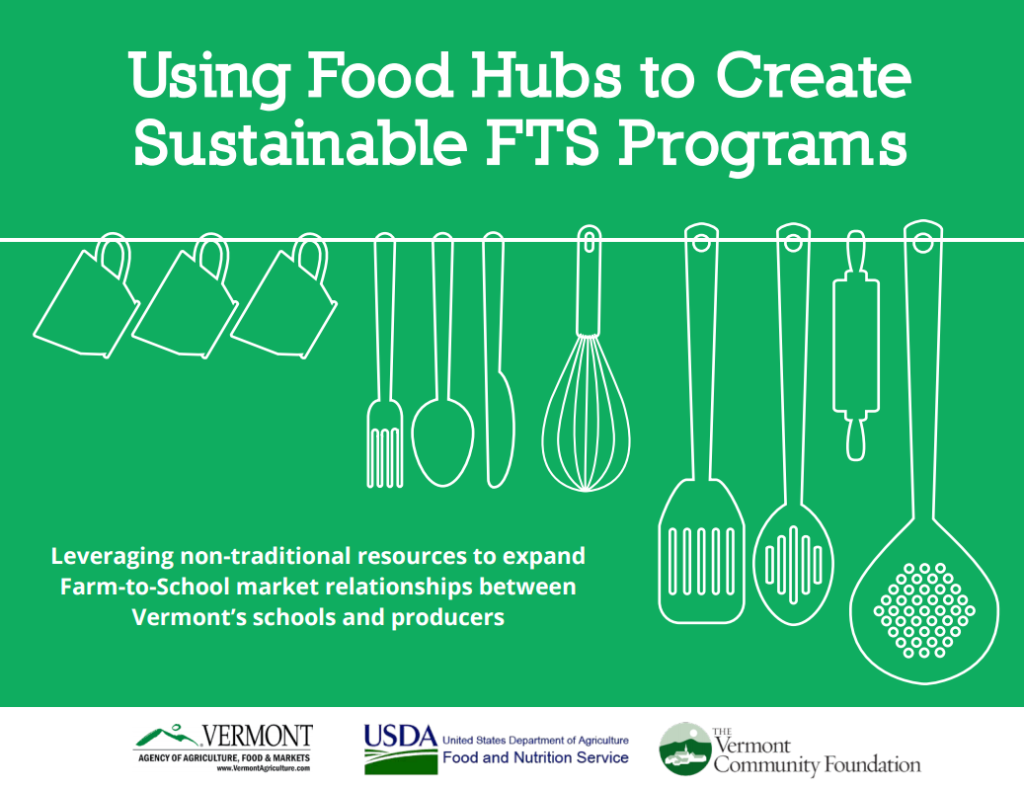Editor’s Note – Vermont has great local, sustainable food programs that partner food hubs with schools.
This article was originally posted on Seedstock and written by AJ Hughes.
—

Volunteers pose next to boxes of gleaned food, all destined for a Vermont food hub. Numerous food hubs in the state supply produce to schools. Photo Credit: Rutland Area Food and Farm Link (RAFFL)
Food hubs and farm-to-school programs are essential mechanisms in increasing access to food produced locally and sustainably. In Vermont, an effort is underway to combine the power of both.
As the recipient of a USDA farm-to-school grant in 2013, the Vermont Agency of Agriculture, Food and Markets (VAAFM) produced a report titled “Using Food Hubs to Create Sustainable FTS (Farm-to-School) Programs.” It explores how to leverage “non-traditional resources to expand farm-to-School market relationships between Vermont’s schools and producers.”
The publication was released in March 2015, and now, more than nine months later, VAAFM local foods administrator Abbey Willard is pleased with its impact.
“How can we actively engage food hubs with farm-to-school programs?” she asks. “We used the grant opportunity as a way to show that food hubs can play these roles.”
Willard has seen how the document has educated people about the work of food hubs and the farm-to-school effort, in addition to helping facilitate new partnerships.
“Nine months later, the guide has improved food hub access to schools,” she says. “We’ve also seen more participation of food hub groups in farm-to-school networks. Lots of food hubs did not realize they could be effective in farm-to-school—many relationships were established.”

Read the report here! Vermont Agency of Agriculture, Food and Markets (VAAFM)
The publication comprises four food hub case studies—each a different variety of hub. They include: Addison County Relocalization Network, which provides an example of using matchmakers to connect buyers and producers; Green Mountain Farm-to-School, which shows how to boost food sales by localizing distribution and aggregation; Mad River Localvores/Mad River Food Hub, which has developed local products specifically for schools; and Rutland Area Farm and Food Link, which encourages community involvement to bolster farm-to-school relationships.
To be included as a case study, each participating food hub worked together for 18 months, sharing their knowledge and building relationships.
A key finding showed that over the course of a year, local food purchases increased 58 percent overall (62 percent per capita) at schools actively working with their local food hub.
This increase positively impacted the participating hubs. For example, Willard says Green Mountain Farm-to-School had 87 customers and $230,000 in sales during the fiscal year 2013. But after joining the study and increasing its relationships with schools, the food hub’s roster of customers shot up to 96 and its sales grew to $350,000 for the fiscal year 2014.
It’s all about economics, she says.
“As farms scale up their production, they look first to natural markets. They can’t do all the work, so they rely on the supply chain to play a supportive role.”
More and more, food hubs and schools are becoming vital links in that chain. At the same time, food hubs and schools (as well as other types of institutions) are engaged in mutually beneficial relationships. This has led to a surge in the number of food hubs in the state.
“In 2009, Vermont had six food hubs—now there are 20,” says Willard. “Food hubs are at the crux of getting food to institutional markets.”
Even though 94 percent of Vermont schools purchase local foods and half of the schools in the states boast a farm-to-school program, Willard feels there is still much progress to be made in this area.
“We have a ways to go, but food hubs engaging with schools can help grow these numbers,” she says. “The key is the continued success. Producers want to scale up production, so they look to institutions as markets.”
The guide also offers practical counsel on contracts, food ordering systems, production planning, and food safety.
Additionally, Willard emphasizes the educational importance of farm-to-school efforts, which not only feed students’ stomachs but their minds. In what she refers to as “agricultural literacy,” learning opportunities include discussion of different food promotion programs, gaining knowledge about tomatoes by going to a farm to make salsa, and talking about barriers to procuring local food.
According to Willard, the publication not only provides an in-depth resource for food hubs and schools looking to work together, but it also helped build strong working relationships between the four participating hubs and the 58 schools they collaborated with during the project.
“There can be value in building these types of support structures,” she says. “We found value in building relationships across the supply chain.”